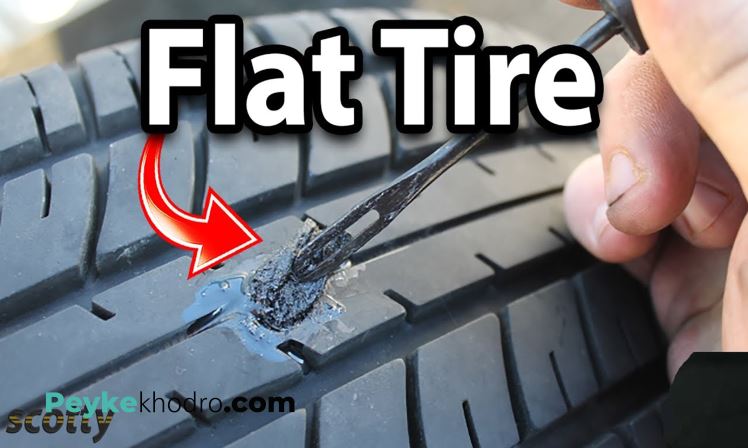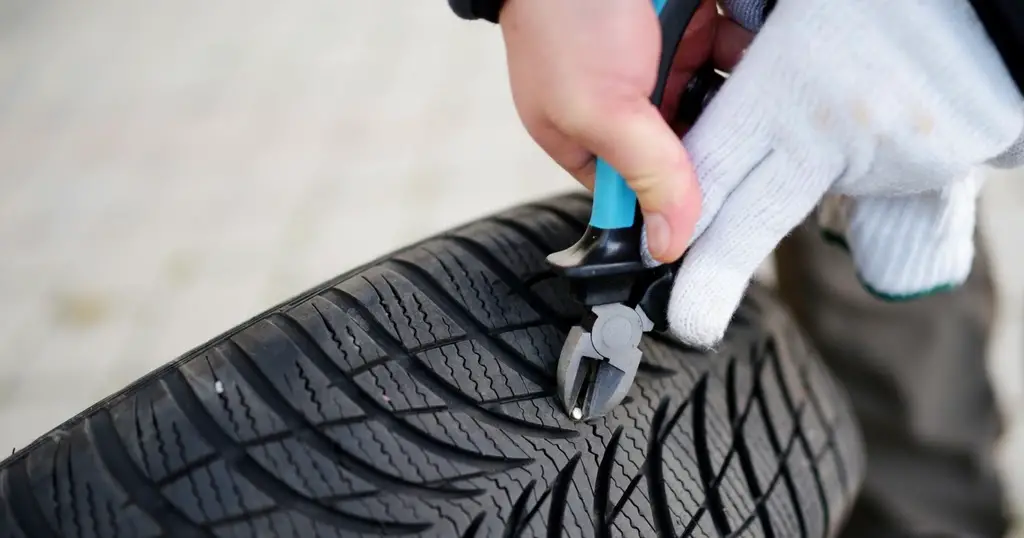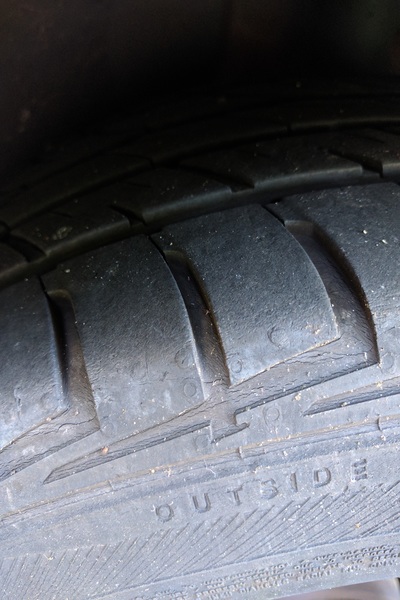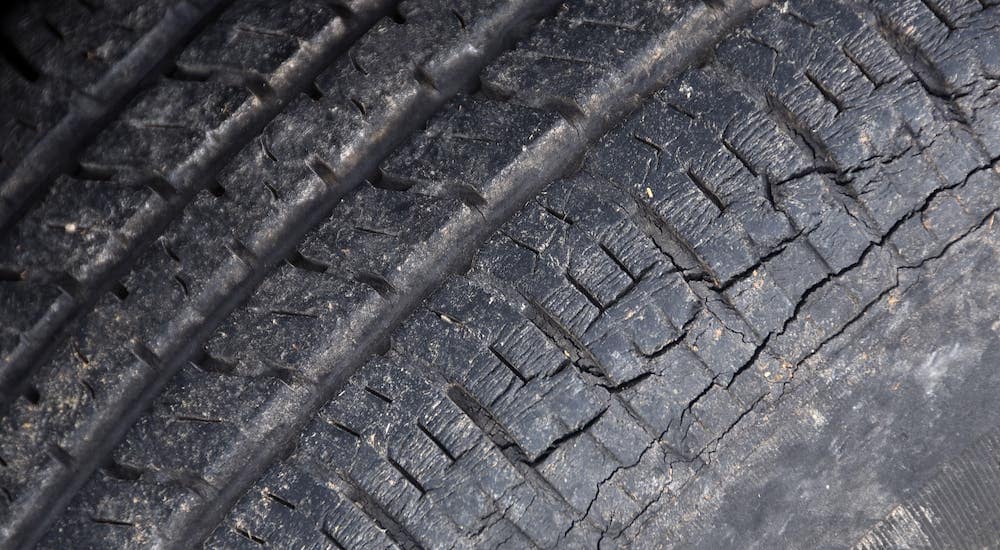While tires are pretty durable, they don’t last forever. A surprising number of factors can adversely affect their lifespans and lead to dry rotting, like extremes of temperature, inactivity, and even sunlight.
You may have found yours are a little worse for wear and are looking for ways to fix them. This article will look at the causes of dry rotted tires, the implications, and what you can do to fix them.
You will first need to remove the tire to reach all areas where dry rot occurs. Then you’ll need to thoroughly clean the tire with a degreaser. You can apply tire protection to make the tire’s rubber stronger and stop dry rot in its tracks.
Consider checking: How Do Tires Get Dry Rot
Here are the main causes of dry rot:
You might be interested in our guide: How To Repair Tire
Assuming the damage isn’t too bad, you might be able to limit further degradation and gain a few more miles out of your tires. Here’s how to fix dry rotted tires:
Here’s how to fix dry rotted tires:
Wear and tear are easily hidden on a tire. To access all areas and take a good look at their condition, remove it. This will allow you to easily see any areas that need fixing.
Check the entirety of the tire for cracks and damage. Several parts of the tire are important. Pay particular attention to the tread, the sidewalls, and the beads. Look for signs of cracking and assess how deep the damage goes.
To effectively clean the tire, you will first need to remove any oily or greasy deposits from its surface. Use a good quality degreaser and a soft cloth or brush to give an even coating to your tire.
Once you have applied the degreaser, you will need to rinse it away. Using a hose and a soft cloth or sponge, remove all the grime and dirt.
By this stage, your tire should be looking a little better. Now you should have a nice clean surface to apply a tire protector. This nourishes the rubber and prevents cracks from spreading.
This nourishes the rubber and prevents cracks from spreading.
The unfortunate thing about dry rotted tires is that they can fail at any time. There is no set period of time, as their lifespan can vary depending on how badly degraded the tires are and how they are being used.
You should certainly consider replacing your tires around every 5 years. If you have noticed that your tires are not looking their best, ideally, you will want to consider your options on how to fix dry rotted tires.
Consider reading of our guide: How Much Is It To Repair A Tire
Suppose you regularly inspect your tires and have noticed the early stages of dry rot. In that case, it may be possible to limit the damage by applying a treatment to the tires and breathing life back into the rubber.
However, dry rot is a sign that your tires may have been subject to conditions that have reduced their efficiency and lifespan, so it might be time to start looking for a replacement.
Knowing how to fix dry rotted tires may save you money and prolong the life of your tire. However, it pays not to take chances when it comes to dealing with rotted tires. After all, it is the only thing keeping you in contact with the road.
If in doubt, you could always consider replacing your tires — dry rot is a situation that will only get worse with time, so you’ll need replacement eventually.
Did you find this guide helpful? Then consider checking other recommended readings:
How To Fix Flat Spots On Tires
How Much Does It Cost To Patch A Tire
How Do You Patch A Tire
How Close To The Sidewall Can You Patch A Tire
How To Fix Hole In Tire
How Long Does A Tire Patch Last
How To Use Slime Tire
How To Use A Tire Plug Kit
How To Fix A Tire Rim Leak
How Much Sealant Per Tire
How To Seal A Tire On A Rim
How To Use Rubber Cement On Tire
How Do You Plug A Tire
How To Seal Tire Bead
How To Vulcanize A Tire
How To Fill Tires With Foam
By Tsukasa Azuma
Last updated Jan 08, 2021
0 comments
Dry rot can completely damage a tire if the problem is not caught early. The worse thing is that no mechanic will agree to repair it. But you can do it at home if you know how to fix dry rotted tires.
The worse thing is that no mechanic will agree to repair it. But you can do it at home if you know how to fix dry rotted tires.
Tires are dry rotted when they turn brittle and dry because of long-term inactivity, dirt accumulation, years of exposure to scorching sunlight, and driving continuously with low air pressure. Such a condition can drastically reduce their lifespan even if the decay just sets in.
Let’s find out how to protect your tires from this corrosive condition:

SEE MORE
Replacing the tires requires loads of money. You already know that repairing dry rotted tires just slowing down the process, not restoring them to the previous condition. Besides learning how to fix dry rotted tires, you can follow these tips to prevent the deterioration:
Besides learning how to fix dry rotted tires, you can follow these tips to prevent the deterioration:
 Applying them every 30 days or more frequently given the weather is bad will produce better results.
Applying them every 30 days or more frequently given the weather is bad will produce better results.People often tend to evaluate the quality of tires and their condition solely by the rest of the tread layer.
Of course, this is an important indicator, but there is a problem that, hitting the tread, does not immediately show visible marks on the surface. Cracking or "dry rot".
Most often, the causes of its appearance are the long storage of the vehicle without movement, low tire pressure, overheating and exposure to certain chemicals. When tires are carefully inspected, dry rot can be seen by the presence of small, web-like cracks.
Cracking occurs when the oils and moisture in the tire's rubber material begin to evaporate, making the rubber hard and brittle, causing the tire to break down quickly.
Simply put, tires found to be carrying dry rot should NOT be used as unsafe tires..jpg)
Although there are no tire brands that are more or less susceptible to dry rot, one should always be aware of the storage and operating conditions that contribute to its occurrence: long periods of inactivity at high temperatures, exposure to chemicals (pesticides, herbicides, etc.). These problems are most typical for agricultural machinery and its wheels.
This does not mean that agricultural tires are inherently more likely to crack. It's just that conditions that are considered favorable for the formation of dry rot usually occur exactly where tractors and combines work.
Actions to prevent the occurrence of cracking involve simply eliminating the consequences of adverse factors with the help of elementary actions.
Proper storage
If you are storing your car for winter or just long-term storage, keep an eye on the factors that are within your control whenever possible. Do not leave the equipment under scorching direct rays for a long time, and always put it in a garage or shed whenever possible.
In winter and summer, of course, it is ideal to store cars in a room where the temperature is regulated.
Regular cleaning
Chemicals are a common occurrence in agricultural businesses and some industries. Chemicals that come into direct contact with the surface of the wheels must be washed off after each work cycle. Simply rinsing with soapy water is enough to prevent harmful compounds from penetrating further into the depths.
Pressure control
Low pressure is one of the serious threats to the good condition of tires, leading to dry rot. Under-inflated tires can develop cracks in the sidewall through which air leaks, contributing to the enlargement of the cracks and the drying of the rubber.
If the tires on your loaders do not have time to last until the tread is completely worn out, not due to exposure to chemicals or aggressive sun, but due to frequent punctures due to production features, pay attention to Tyrefill technology - filling tires with polyurethane.
The PST company has been providing this service to its customers for several years and has collected quite a lot of positive feedback and properties of the proposed composition. The tires are softer and more “springy” than ordinary solid tires, while they are not afraid of sharp objects.
Call and find out more: +7 (495) 150-04-39
02/22/2018
Despite the objective importance of the spare tire, not all drivers always have it with them. Some do not carry a spare tire out of hope or belief that their tires are invulnerable. Others deliberately take this step, as they stocked up with a special tool in advance, which, if necessary, can eliminate a tire puncture along the way. What else can be used and how to do it right? Let's figure it out.
Contents of :
Conventionally, all methods for express tire repair can be divided into two categories:

Consider ways to restore a damaged tire on the road. The first three methods are temporary. The latter, with the right approach, allows you to completely restore the tire.
 Immediately after use, it is recommended to drive 300-500 m so that the sealant is evenly distributed over the entire surface of the tire and does not cause imbalance.
Immediately after use, it is recommended to drive 300-500 m so that the sealant is evenly distributed over the entire surface of the tire and does not cause imbalance.

After removing the foreign object, the hole is processed with an awl with abrasive edges: this tool must be inserted into the puncture and cleaned and developed with intensive reciprocating movements several times. Then the raw rubber tow is removed from the package and inserted into the eye of the second awl so that both ends are the same length. The hole in the tire and the raw rubber is treated with an activator. Next, the awl is inserted into the puncture in such a way that small ends of the tourniquet, about a centimeter long, remain outside. After 5 minutes, the excess remaining on the surface is cut off. This method can also successfully eliminate small side cuts.
There is a technique that allows using wire and several bundles of raw rubber to get rid of even extensive side damage to tires. However, it is quite difficult to implement and not every driver will be able to implement it.
Consider a few well-known tools that are most widely used to repair punctures:
 Supplied in a convenient bottle with a hose and a tip for connecting to a tire valve. It works in the same way as most sealants: the container is thoroughly shaken, after that a hose is attached, and the contents from the container are completely pumped into the tire. The maximum diameter of the repaired hole is 4.5 mm. This is almost always enough to repair punctures caused by nails and screws.
Supplied in a convenient bottle with a hose and a tip for connecting to a tire valve. It works in the same way as most sealants: the container is thoroughly shaken, after that a hose is attached, and the contents from the container are completely pumped into the tire. The maximum diameter of the repaired hole is 4.5 mm. This is almost always enough to repair punctures caused by nails and screws.
